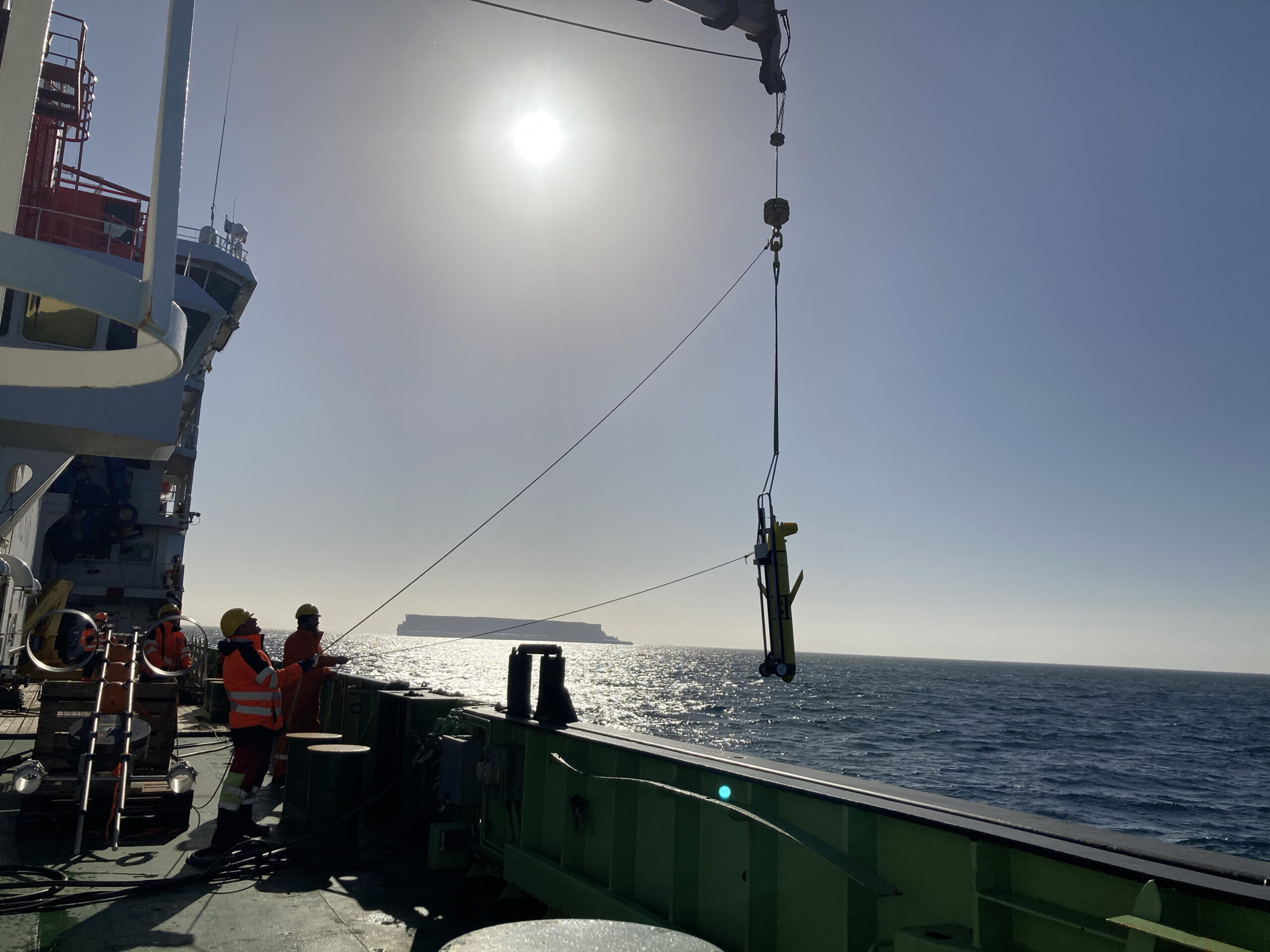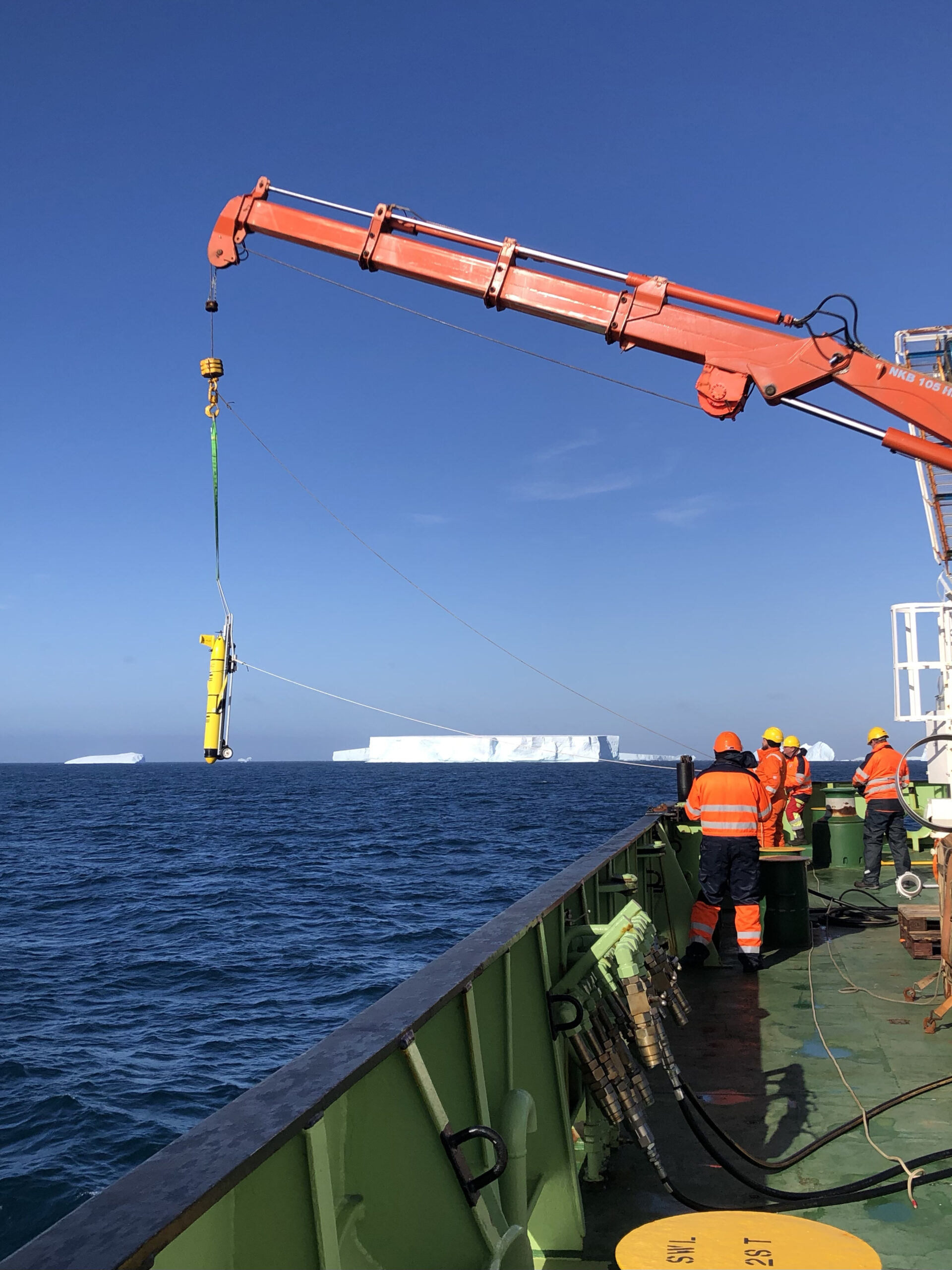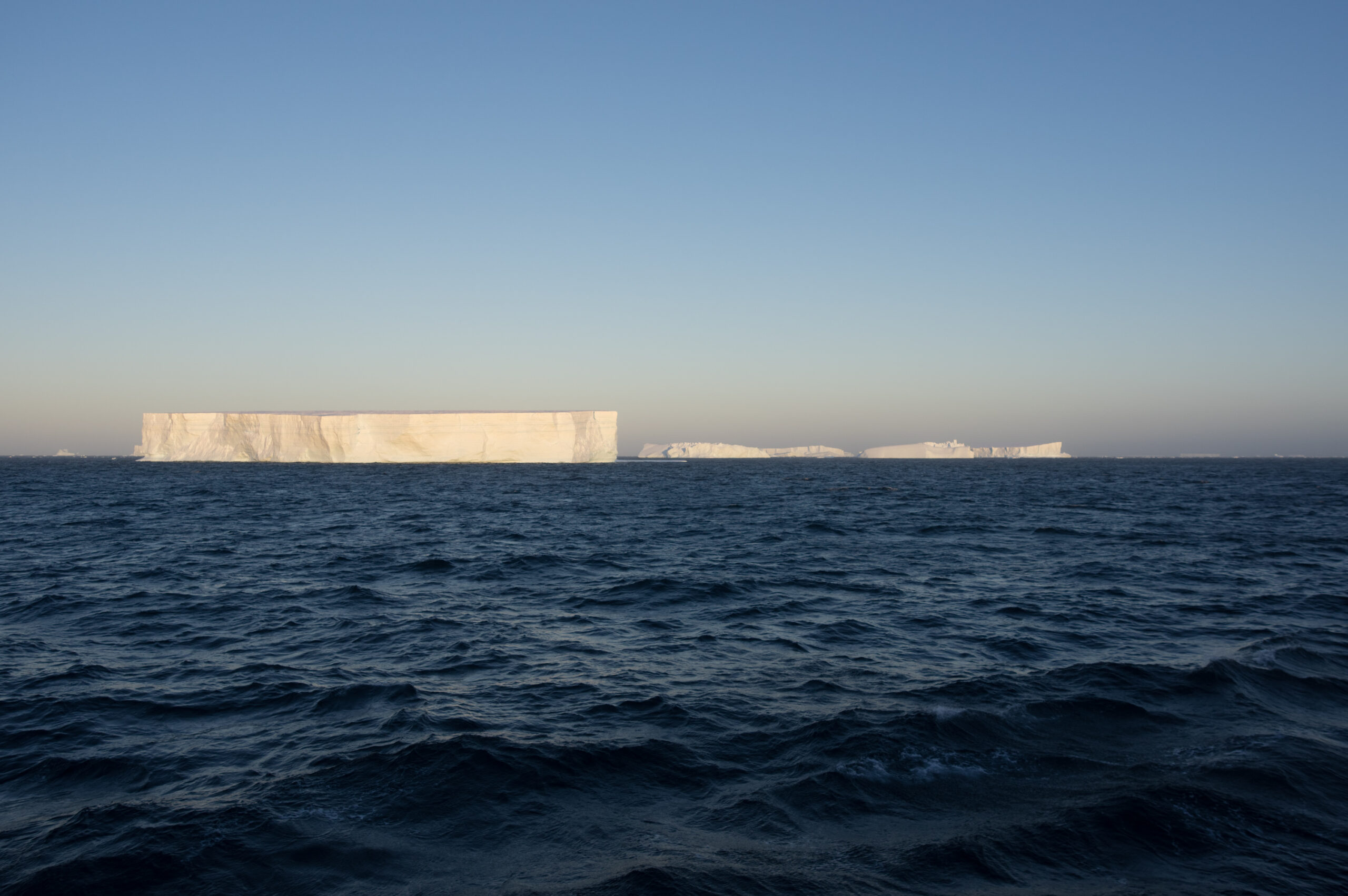For the first time, scientists have collected measurements close to a giant iceberg, giving an unprecedented window into the impact of meltwater on the surrounding Southern Ocean and ecosystem. The paper is published today (4 April 2025) in the journal Nature Geoscience.
A team of researchers from British Antarctic Survey (BAS) and the National Oceanography Centre (NOC) deployed robotic gliders from the RRS James Cook, 23 km from one of the world's largest icebergs, A-68a, in February 2021 close to the sub-Antarctic island of South Georgia.
Gathering data on icebergs is notoriously difficult. Large scale movements of giant icebergs can be tracked with satellites, but ships will not get close as smaller scale movements are currently unpredictable. This means the data needed by researchers to develop accurate models - critical for predicting future climate change - is often missing.

The gliders collected data on the ocean's salinity and temperature, along with chlorophyll (a proxy for productivity) and optical backscatter, which measures the particles suspended in the water.
The unique measurements revealed that as the iceberg melts from beneath - a process called basal melting - a layer of water called 'Winter Water' (formed in the Austral summer when warmer waters cap cooler winter waters below), is 'eroded'. This band of cold water, only present in this time period, provides a barrier between surface and deeper waters, restricting nutrients from reaching subsurface layers.
By eroding this barrier, nutrient-rich deep waters can rise towards the surface, along with mineral-rich particles, such as iron and silica, from the melting iceberg. These nutrients play a key role in stimulating primary productivity creating food for the charismatic animals that live in the Southern Ocean.

Natasha Lucas, a physical oceanographer and honorary researcher at BAS and lead author of the study, said:
"We think this is the first time measurements have been made so close to an iceberg - so it's really ground-breaking stuff! It was just really exciting to see the data come back and see how the ocean was changing so drastically.
"The number of giant icebergs is increasing with climate change so it's important that we understand the physical and biological processes that happen as an iceberg of this size melts, often far from its source. By mixing up these ocean layers - which are normally very stable in the Antarctic summer - the ocean's temperature, its salinity and the amount of nutrients are all changed. This ultimately impacts how much heat and carbon is exchanged between our ocean and atmosphere."

The mission was high-risk; remotely operated robotic gliders are not normally deployed so near to icebergs. Natasha added:
"This mission was far from straight forward. We were piloting the gliders remotely from over 12000 km away, each in our own 'lockdown' offices during COVID, relying on infrequent cloud-free satellite imagery to locate the iceberg and smaller icebergs around it. A-68a was constantly on the move, we sadly lost one glider, and the second glider got trapped under A-68a a few times. However, after it emerged victorious 17 days later with a wealth of data, we were able to quantify the processes involved as these giant icebergs melt."
Since the A-68a calved in 2021, several more megabergs have made their way towards South Georgia. Most notable of these is A-23a, which grounded on the island's continental shelf earlier this year. Researchers on the RRS Sir David Attenborough recently collected samples from the iceberg as they transited past as part of the BIOPOLE 2 science mission which will be analysed back in the UK.






